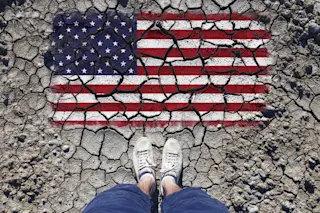Dystopia is a country where everyone is unhappy. With the lowest income in the world, the least freedom, the lowest life expectancy, least social support, and most corruption, they’re actually the worst country in the world.
Dystopia, as it happens, doesn’t actually exist — except as a reference for other countries in the World Happiness Report, a global collaborative survey that ranks the earth’s happiest and unhappiest inhabitants. And the United States isn’t anywhere near as miserable as Dystopia — but they may be inching closer: in the first year the World Happiness Report was published (2012), the United States came in 11th. But the most recent report finds the U.S.A. down eight happiness rungs, to the 19th position.
What’s more, results from the COVID Response Tracking Study, based on data from the General Social Survey, reported in May that Americans were the unhappiest they’ve ever been — 23 percent ...














